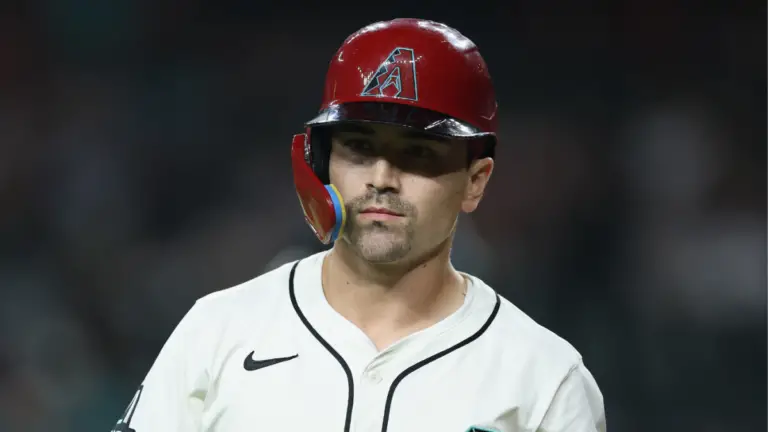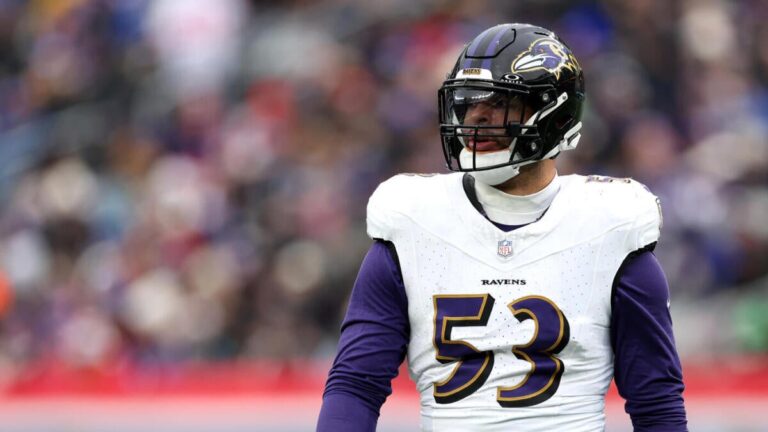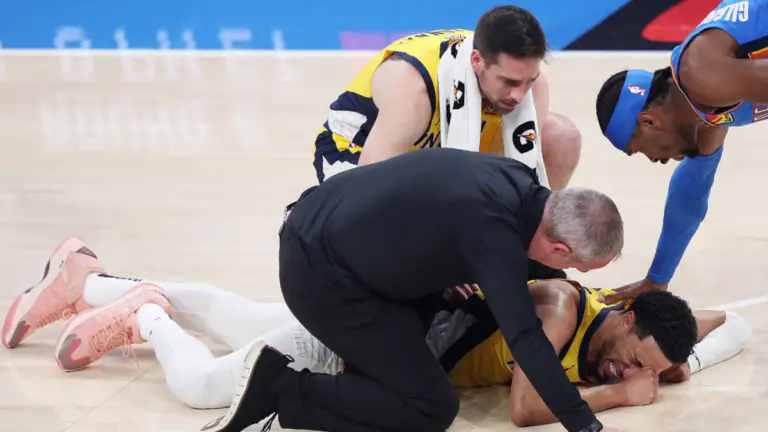
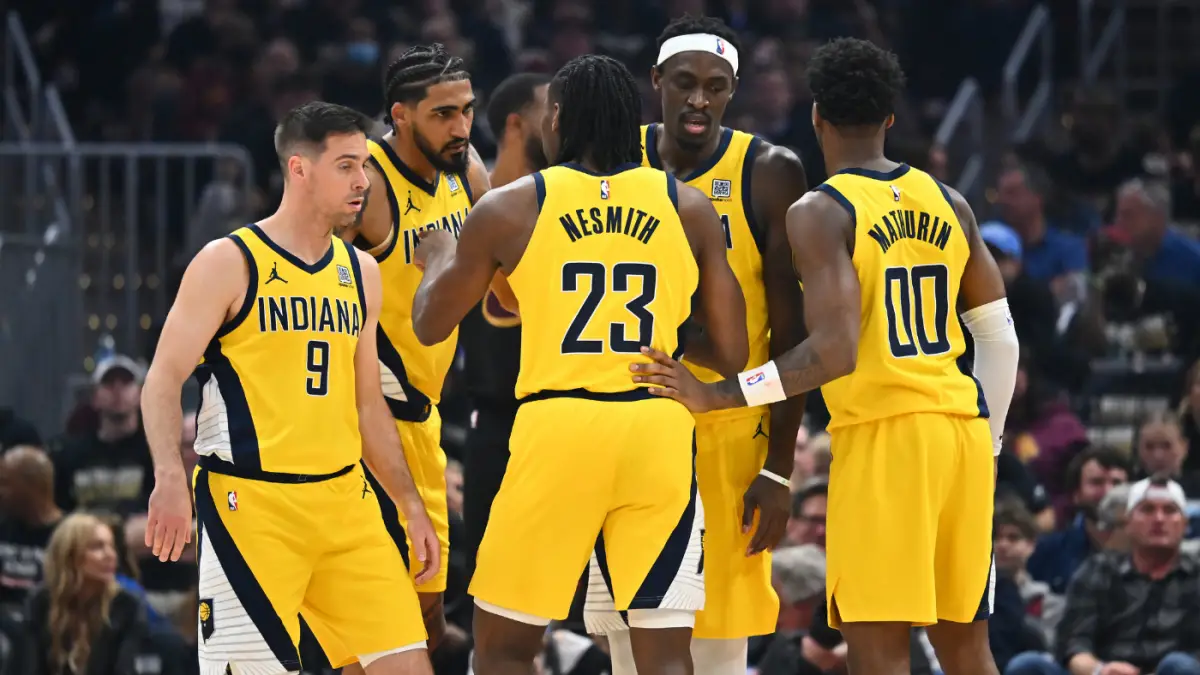
Have Pacers created an apron-era blueprint? Four roster-building lessons from surprising NBA Finals run
Have Pacers created an apron-era blueprint? Four roster-building lessons from surprising NBA Finals run
The Indiana Pacers may not have ultimately won the NBA championship, but they came far closer than anyone could have reasonably expected. They were technically the sixth No. 4 seed to reach the Finals, but they had little in common with their predecessors.
The 1969 Celtics were pre-merger and the 1978 Sonics came right after. The 2006 Mavericks were a No. 4 seed in name only. They had the second-best record in the Western Conference but were punished because they shared a division with the No. 1 seeded Spurs. The 2010 Celtics and 2018 Cavaliers were recent champions.
The Pacers, though, were something relatively new. A true middle-of-the-pack playoff team in the regular season morphing into a championship-caliber juggernaut in the playoffs? That just doesn’t happen. They were roughly a 30-to-1 underdog to win the Eastern Conference when the playoffs began. Save perhaps the 2023 Heat team that reached the Finals through the Play-In Tournament, the Pacers were probably the most surprising finalist in recent memory.
Indiana’s future prospects are now in jeopardy. With Tyrese Haliburton’s Game 7 torn Achilles, they themselves probably aren’t making it back to the Finals next season. But there are still lessons to be learned from their surprising playoff run that other teams can apply to their own roster-building efforts. Here are the four most important ones as we head into the offseason.
1. One team’s trash is another team’s treasure
We tend to think of small-market contenders as mostly draft-based, but of the 10 most-used Pacers in the postseason, only four were drafted by Indiana. Three, however, were so-called “second draft” acquisitions, players who were once first-round picks of other teams but were acquired by the Pacers on their rookie contracts.
The most famous of that trio is, obviously, Tyrese Haliburton. The Pacers swapped Domantas Sabonis for him in 2022 and it completely remade their franchise. If the Kings had known what Haliburton was going to become, they never would have made that trade. And that’s what makes second-draft acquisitions so tantalizing.
No players in basketball are more dependent on circumstances than rookies. Aaron Nesmith was drafted by a loaded Celtics team. The Celtics made the Finals in 2022, his second and final season with them. They used Payton Pritchard a fair bit, but that was because they needed his shooting. Nesmith hadn’t figured out how to play offense in the NBA yet, and the Celtics were obviously loaded on the wing with Jayson Tatum, Jaylen Brown and Marcus Smart. They just had no real way of knowing how good he could be two years in. He wasn’t exactly a throw-in to the Malcolm Brogdon trade, but he wasn’t its headliner either.
Obi Toppin got drafted by Tom Thibodeau’s team, and Tom Thibodeau never plays backups. He was stuck behind Julius Randle and Thibodeau, as old-fashioned as he is, refused to try the two of them together in a double-power forward lineup. Ironically, the Pacers had a lot of success with those lineups because Rick Carlisle was creative enough to figure out how to make them work.
So many things can mess up a rookie’s development. He could be drafted by a team with a logjam at his position. He could be drafted by a team that’s hyperfixated on the present at the expense of the future. He could just land with a coach that doesn’t understand how to use him. All of this was true for Haliburton. The Pacers have recognized the benefits of buying low on such players because they know they have a coach in Carlisle who will figure out how to make the most of them. That their values are often so low upon acquisition that the Pacers can get them without giving up much and can extend them at reasonable prices is a nice bonus. Speaking of which…
2. Pay everyone early
The Pacers are known as one of the more frugal teams in the NBA. They haven’t paid the luxury tax in more than 20 years. And yet, in an era defined by draconian salary rules created by the 2023 collective bargaining agreement, the Pacers built a Finals team on depth, and they didn’t do so just by tanking and stacking young stars on rookie-scale deals. Most of this core is on its second contract or later. So, how did the Pacers afford all of this talent? They paid everyone early.
Nesmith had only played around 1,200 career minutes when he arrived in Indiana. His third season was promising, and the Pacers even made him a starter, but his 3s were only falling at around a league-average rate at that point, and he still had a long way to go defensively. But the Pacers locked him up anyway to a three-year, $33 million rookie extension. That deal looks like a bargain now that Nesmith has become one of the best 3-and-D role players in the NBA.
They were even more aggressive with Myles Turner. In 2023, they were sitting on a substantial amount of in-season cap space. They could have used that space to absorb salary from other teams in exchange for assets. Instead, they went the other way by giving Turner a two-year, $60 million extension. A $30 million per year annual average salary was roughly fair value for Turner, except the Pacers used their cap space to give him an immediate $17.1 million raise in an otherwise lost season. That allowed them to pay Turner less, around $41 million in total, over the past two years, when they were trying to win.
T.J. McConnell? Re-signed to a four-year extension last summer. Andrew Nembhard? Inked to what will almost certainly be a below-market four-year extension as soon as it was legally allowable. This is what Indiana does. The Pacers take care of their players early, and in exchange, they get them at reasonable prices. Market conditions never force them to overpay because their players practically never actually hit the market.
There’s a caveat here, and it boils down to “be as smart as the Pacers are.” The downside risk of extending players early is the danger that they aren’t as good as you hope they are. Take Zeke Nnaji. He’d played only around 1,800 minutes in his first three seasons, but Denver still committed to giving him a four-year, $32 million extension in the hopes that he could be the sort of bargain Nesmith became. Instead he went the other way and is borderline unplayable. That contract is now an albatross for Denver. Pay the wrong guys too early and they become dead money. But the Pacers are so good at drawing whatever useful traits exist out of a player that they can reliably get bargains this way.
In the apron era, bargains make all of the difference, and the reward of getting one, at least if you’re serious about your championship ambitions, is usually going to outweigh the risk of a Nnaji-esque situation. The Pacers don’t seem like it, but remember, they’re paying out two max contracts right now to Tyrese Haliburton and Pascal Siakam. Building the depth around those two that the Pacers have would be impossible if everyone was paid properly. But the Pacers have recognized that by acting early, they can get good players at discounted enough prices to sustain a legitimate team.
3. The right star is the available star
Really think about what the Pacers ultimately gave up to get Pascal Siakam:
- Bruce Brown, a failed free-agent signing they weren’t going to be able to use for anything beyond matching salary.
- Jordan Nwora, a young flyer who is currently playing in Turkey.
- Three first-round picks that came in at No. 19, No. 23 and No. 29 overall.
That’s all it took to get the Eastern Conference Finals MVP. It’s not as though much more was expected out of that package at the time, either. Interest in Siakam was limited. The only other team known to have pursued Siakam aggressively was Atlanta. The Sacramento Kings looked into him, but reportedly preferred OG Anunoby.
That makes some theoretical sense. Anunoby slides easily onto just about any roster with his shooting and incredible defense. We’ve seen similar player archetypes go for enormous prices. The Knicks gave up five first-round picks for Mikal Bridges, after all. Siakam is a trickier fit. His shooting was suspect before getting to Indiana. While he’s a strong defender, he’s not as positionally versatile as Anunoby. He can’t slide onto any team. He needs the right one, or at least a willingness to build the right one. That lowered his value.
The Pacers probably could have been picky. They controlled all of their own first-round picks, and in Haliburton, had the sort of recruiter most stars would want to play with. Instead, they grabbed the guy who was available at a good price, and they’ve benefitted tremendously. Could they have theoretically landed a better player in that salary slot? Sure. But it would have taken time, and who knows how much more it would have cost. Instead, they’ve made two deep playoff runs with Siakam.
This logic doesn’t apply to every team. Teams like the Spurs and Thunder, for instance, are so young and so rich in assets that they can afford to wait for their ideal target. But more common are small-market teams like the Pacers and the Cavaliers, who made a similar albeit pricier move to get Donovan Mitchell when the chance presented itself. Opportunities to land stars are rare, especially in markets like that. When such a chance materializes, the Pacers are proof that it’s usually the right idea to take it and figure the rest out later.
4. Design for depth
Last offseason, the Philadelphia 76ers carved out roughly $60 million in cap space. There was never any doubt about what they wanted to do with it: sign a star. This is conventional wisdom. We call it “max cap space” because it is literally, ideally, meant to be used to pay a single player a max salary. Sure enough, they paid Paul George $49.2 million to play for them last season. Now compare that to Indiana for a moment. Ignore players on rookie contracts or max deals. The Pacers are just paid their four market-value veterans — Myles Turner, Obi Toppin, Aaron Nesmith and T.J. McConnell — roughly $4 million more at around $53.2 million combined.
This is not meant to criticize all star pursuits or max contract. In the section above we just extolled the virtues of adding whichever star is available. But there’s important context there. The Pacers designed for a two-star salary structure. When you’re paying two stars, you have enough flexibility underneath them to pay everybody else. The 76ers, on the other hand, have a three-star salary structure. Their depth was predictably terrible. When George and Joel Embiid struggled with injuries, the 76ers fell apart. But even when they were healthy, the team was nothing special. Even in games George, Embiid and Tyrese Maxey all played, the 76ers went just 7-7.
Indiana’s run — and Oklahoma City’s while we’re at it — suggests to us that depth is more important in the contemporary NBA than it used to be. Injuries in the playoffs are more common than ever. The modern game is more demanding on the body than it used to be. While the bruising physicality has been reduced (though it seemingly makes a comeback every spring with the more lenient playoff whistle), it has been traded for significantly more speed and movement. Players get tired more easily, and they are tested much more strategically. A decade ago, putting a center on a non-shooting wing was viewed as revolutionary. Now it’s practically standard operating procedure. Every small weakness is attacked. Rosters have to be adaptable enough to survive encounters with anything four different playoff opponents could possibly throw at them.
That was possible with three max contracts in the old world. Teams had access to mid-level exceptions every offseason no matter how much they were spending. There was no real penalty for retaining your own players aside from bigger luxury tax bills before the aprons. Teams had the flexibility to trade as much as they wanted. There were far more ring-chasing veterans in the era before everyone signed contract extensions. This is not the world that we live in anymore.
Your solution to depth can’t just be “we’ll figure it out later” anymore. It has to be something that is actively accounted for. That doesn’t mean three-star builds are off of the table entirely. The Thunder have one, after all, but with two notable caveats. The first is that two of their stars are currently on rookie deals. The second is that they have accumulated so much draft capital that they will be able to cost-control their depth even after Jalen Williams and Chet Holmgren get expensive. It’s unconventional and probably impossible for most teams to replicate, but the Thunder have built with depth in mind.
The Thunder can’t be duplicated, but opposing teams would be foolish not to emulate NBA champs
James Herbert
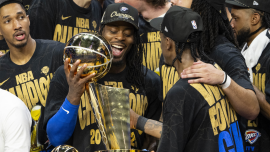
That’s the key here. We’re no longer in the “stack as many stars as humanly possible” era. You obviously need some measure of star power. That’s why we covered the concept that the right star is the available one. You just need to devote proper resources to pairing it with sufficient depth because you’re not going to be able to reliably find it on the cheap anymore.
For most teams, this is going to mean building two-star rosters. The Grizzlies seemingly caught onto this with their Desmond Bane trade. Others will probably move in this direction as well, which might ironically open the door for teams that are currently star-less to snag a star that might not have been available in years past. There are going to be a handful of three-star groups out there, but almost all of them are going to be anomalous in some way. Maybe there will be such teams in which one player is on a blatantly below-market contract, as Stephen Curry was between 2013 and 2016. Maybe there will be teams like the Knicks in which key players jointly decide to leave money on the table for the sake of the roster. Or maybe some team will assemble a collection of talent so rare and so appealing that its recruiting power supersedes its financial limitations. You might be able to get away with three players on max contracts if those players are, say, 2010 LeBron James, Dwyane Wade and Chris Bosh.
No such trio exists today, and teams can’t plan for the ability to build one. The Pacers have given the league an alternative blueprint. Conventional wisdom may have always been “get as much star power as possible,” but the Pacers just showed the NBA the power of depth.
NBA,Indiana Pacers

